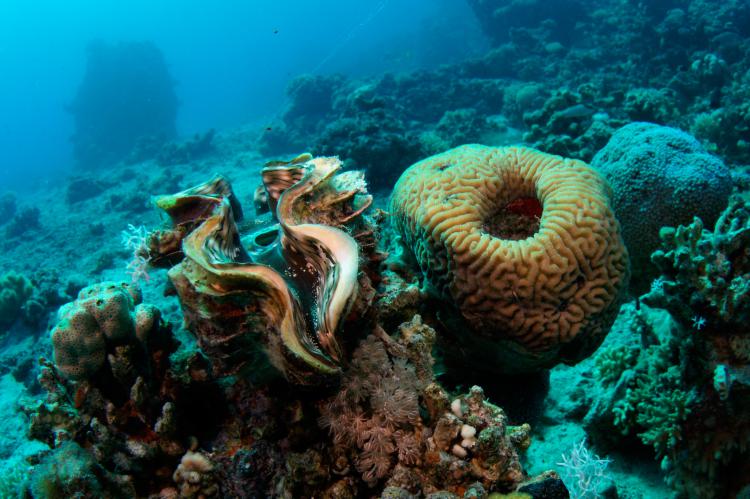Giant clams keep corals reefs healthy
Giant clams are reef builders and shapers, food factories, reservoirs of algae, water filters, nurseries for fish, serving as refuges for juveniles escaping predators, and the shell ridges provide privacy for adults laying eggs.
Peter Todd, a marine ecologist at the National University of Singapore, and his colleagues have examined the clams' roles, and hope the findings will reinforce the case for conserving the molluscs. Giant clams are under great pressure from threats such as overfishing and global warming.
The team found that the 13 species of giant clams are food factories for coral reef inhabitants. They host food-making algae known as zooxanthellae, serve as food for predatory crabs, lobsters, and even their spawn and faeces attract opportunistic feeders and scavengers such as small snails, crabs and lobsters. The wide array of morphological and behavioural defences exhibited by giant clams is also indicative of their importance as a food source. Giant clams and their predators are likely to have been in an evolutionary arms race for millions of years. To resist attack, tridacnines have evolved large body sizes, reduced byssal orifices, and heavy strong shells.
Reef builders
Their shells also help build reefs. Finally, dense populations of giant clams produce large quantities of calcium carbonate shell material that are eventually incorporated into the reef framework. Some species produce 80 tonnes of carbonate shell material per hectare each year, which is available as housing for soft corals, sponges, sea squirts and large algae. But these benefits are likely to continue only if giant clam populations are healthy, making their conservation paramount, the team concludes.


